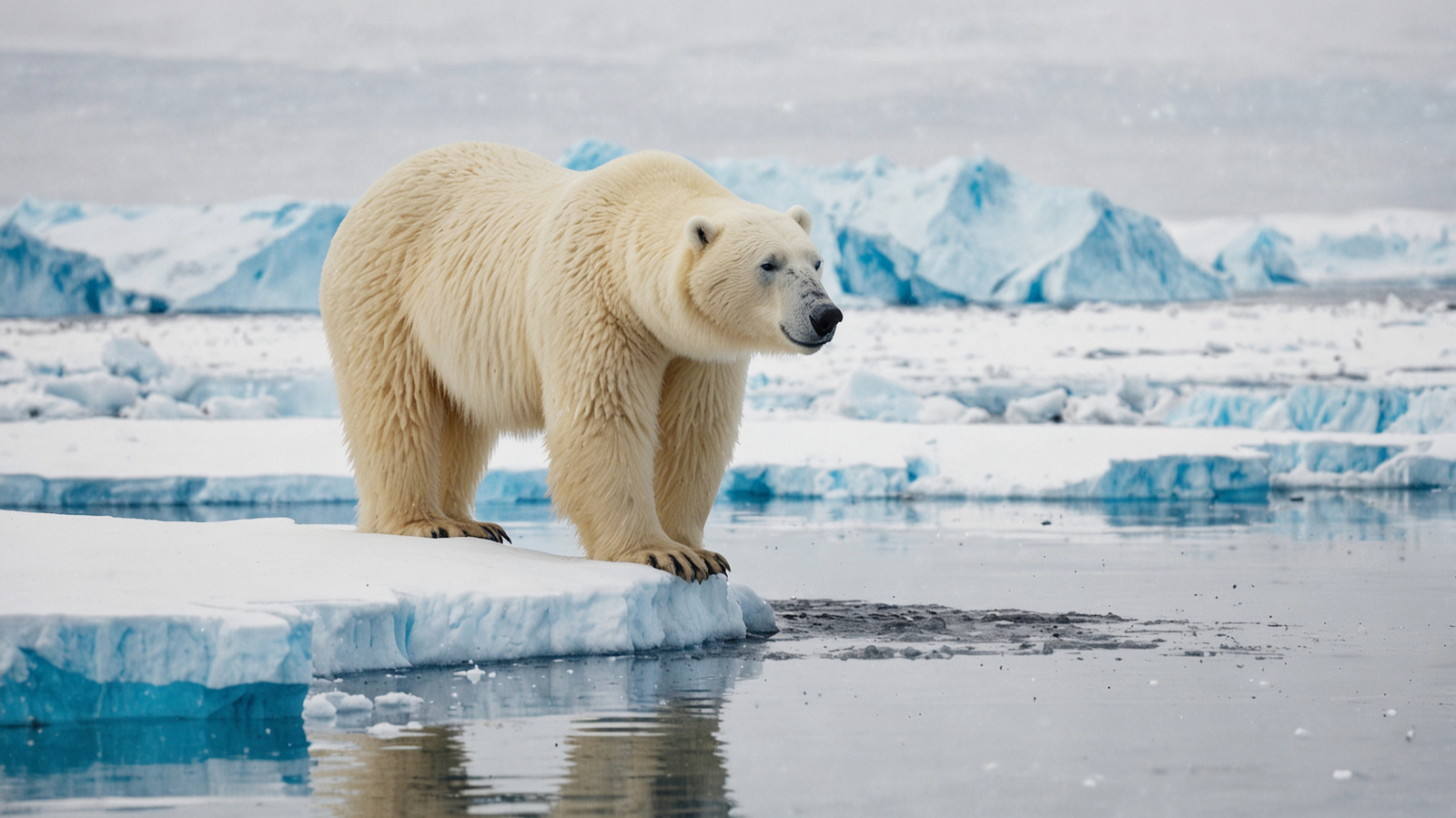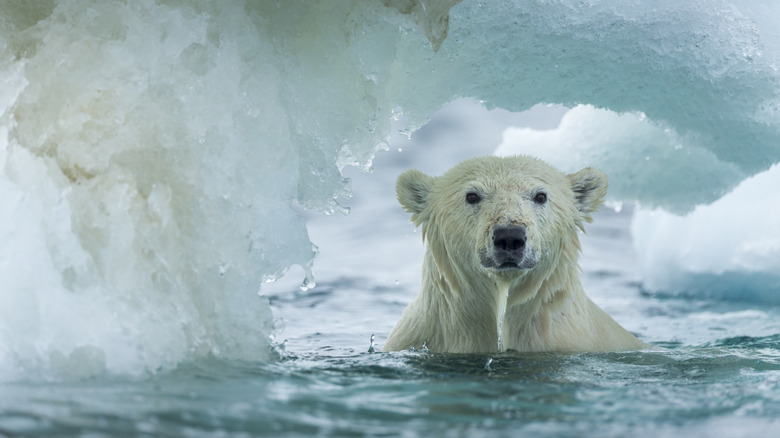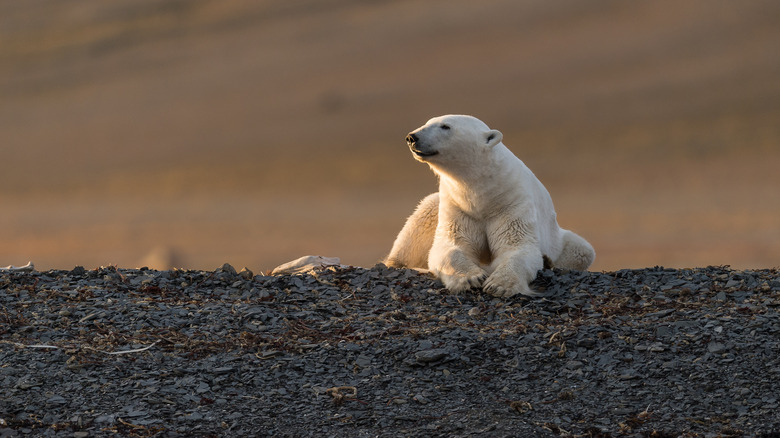Polar bears are synonymous with the whiteness of their fur. However, their fur is not actually white. It’s transparent and covers black skin. Why, then, do they not look like black bears?
The polar bear’s white-looking fur gives them a huge advantage in their territory. These bears live in the Arctic and adjacent areas. Some bears have even moved into abandoned buildings on Kolyuchin Island, which is in the Russian Arctic. Polar bears are the largest bears in the world, growing up to nine feet in length and weighing up to 1,300 pounds.
Polar bears sustain their huge size with a diet of mostly seals, and their white-looking fur is key for them to travel the Arctic with relative camouflage. Polar bears have an underlayer of short, thick hair and an outer layer of long hair. This long hair, known as guard hair, contributes to an interesting trick of light that makes polar bears appear white.
It’s a trick of the light
The coarse guard hair of polar bears is actually hollow and contains light-scattering properties. When light hits the hollow inside of the hair, some of it gets trapped. The light-scattering particles inside the hair intensify the trapped light to create luminescence. The guard hairs themselves, then give off a white light. Between each guard hair is salt, which has a similar effect to give off white light.
The black skin of polar bears also contributes to their white look. When UV light hits the black of their skin, it gives off a white color. The final element at play is what the guard hairs are made of: the protein keratin. Keratin itself has a slightly off-white color.
All of this contributes to make the transparent fur of the polar bear look as white as the Arctic around them. Polar bears shed their fur in the late fall and grow new fur in. Just before shedding, their fur can look yellow or brown due to the general wear on it across the year. This has the added benefit of helping them blend in to the changing environment during the summer months. With the fur’s ability to not freeze in the Arctic, and growing in a fresh coat before the winter, polar bears are well-adapted to their environment.
Polar bear survival
Despite how well-adapted they are to the Arctic, the status of the polar bear is currently listed as Vulnerable. There are only between 22,000 and 31,000 polar bears left, according to the World Wildlife Fund. The reason their population is declining is that they thrive on sea ice, and climate change has reduced the size of their habitat.
A study published in Communications Earth & Environment revealed that Hudson Bay was remaining ice-free a month longer than usual due to climate change. This has a severe impact on the polar bear’s hunting season, as well as the thickness of the ice to support their massive bodies. A polar bear that cannot travel across ice is a polar bear that cannot effectively hunt.
Polar bears are the perfect Arctic predators. Their transparent fur and black skin work in unison to make them look white and allow them to hide in their environment. A loss of ice, however, will severely impact the polar bear’s natural camouflage and evolutionary adaptations to their home.











